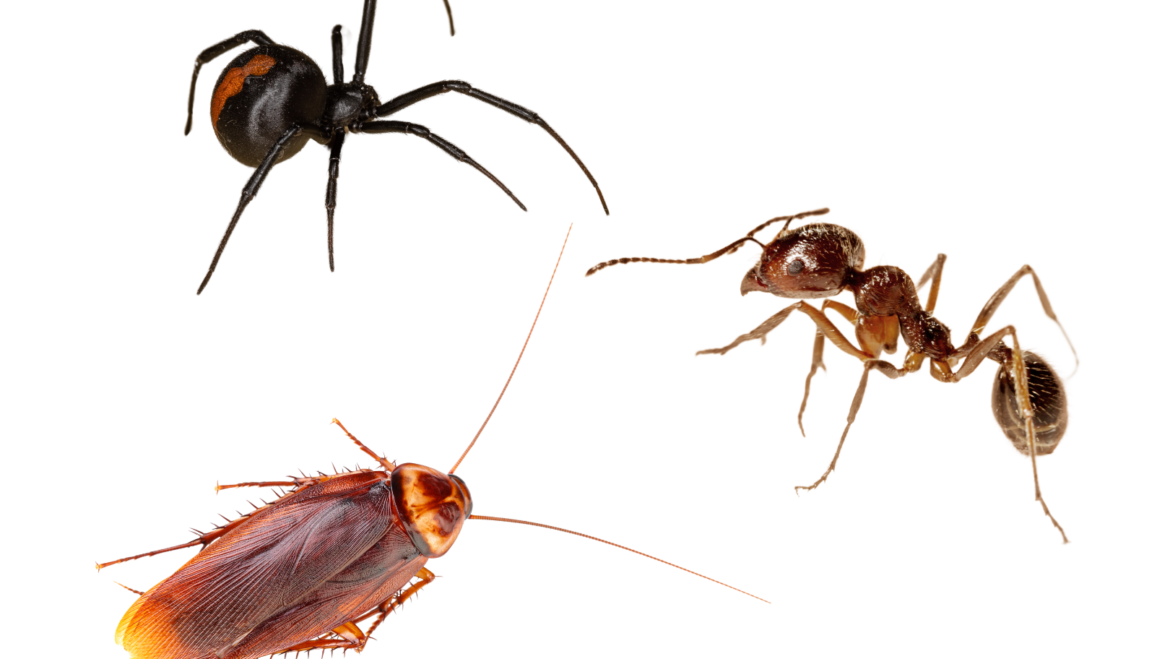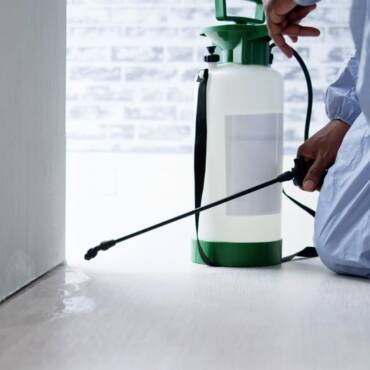What Do Termites Look Like?
Think you might have termites? You’re not alone. Brisbane’s warm, humid climate is the perfect breeding ground for these silent destroyers, and early identification is crucial. At RapidKil, we’ve helped countless homeowners in Brisbane and South East Queensland protect their properties from termite infestations — and it all starts with knowing exactly what termites look like at every stage of their life.
Let’s break it down with a detailed, comprehensive guide to termite identification — so you can spot the signs early and protect your home before the damage becomes irreversible.
Why Knowing What Termites Look Like Matters
Termites are not just a nuisance — they’re one of the most destructive pests in Australia. Causing hundreds of millions of dollars in structural damage each year, they often go undetected until serious harm has been done. Identifying termites early gives you a better chance of stopping the infestation before it spreads.
In Brisbane, termites thrive due to our humid subtropical climate, meaning infestations can happen quickly and silently. And unlike ants or cockroaches, termites tend to avoid light, hiding behind walls, under floors, and inside timber structures — out of plain sight.
The Termite Life Cycle – What They Look Like from Egg to Adult
Like many insects, termites go through a full life cycle from egg to adult. Each stage brings a change in appearance, making it vital to recognise all phases of development.
1. Termite Eggs
Termite eggs are tiny, translucent, and spherical — almost like miniature grains of rice. They’re usually laid in clusters by the queen, deep within the nest, and are rarely seen by homeowners. You’re unlikely to spot them unless a nest is fully exposed.
2. Termite Larvae
After hatching, termite larvae emerge. These baby termites are soft-bodied, white, and resemble tiny grubs. They’re practically indistinguishable from larvae of other insects at this point. Their role is to be nurtured and fed until they’re ready to develop into workers, soldiers, or reproductive termites.
3. Nymphs
Nymphs are a transitional stage — think of them as teenage termites. At this point, they still have a pale white appearance but begin to show signs of their future caste. They develop straight antennae, a uniform body shape, and lack wings.
This is the stage where differentiation happens — some become workers, some soldiers, and others reproductives (the ones that eventually fly off to create new colonies).
Types of Termites Commonly Found in Brisbane Homes
In any mature colony, you’ll find a caste system that includes three main types of adult termites — workers, soldiers, and reproductives. Each looks different and plays a unique role in the colony.
Worker Termites
These are the termites you’re most likely to come across. They make up the majority of the colony and do all the heavy lifting — literally. They build tunnels, forage for food, and care for the young and the queen.
- Colour: Pale white or creamy.
- Size: About 3–4 mm long.
- Appearance: Soft-bodied, no wings, round head with straight antennae.
- Behaviour: Always hidden, rarely seen unless a nest or wall is disturbed.
Soldier Termites
Soldiers defend the colony against predators, especially ants. They have larger heads and powerful jaws (mandibles) that help them fight off invaders.
- Colour: Slightly darker than workers, but still pale.
- Size: Around 5–7 mm.
- Appearance: Larger heads, oversized mandibles, no wings.
- Behaviour: May appear alongside workers when a nest is under threat.
Reproductive Termites (Alates/Swarmers)
These are the only termites with wings. They’re the ones you’ll see during a termite “swarm” — especially in Brisbane’s spring and summer evenings, following rain. Swarmers are reproductive termites on a mission to start new colonies.
- Colour: Dark brown to black.
- Size: 7–10 mm.
- Appearance: Two pairs of wings of equal size, straight antennae, more slender body.
- Behaviour: Attracted to light, often seen around windows or light fittings.
Once swarmers find a new location, they shed their wings, pair up, and begin forming a new colony — right under your home if the conditions are right.
Ants vs Termites – How to Tell the Difference
One of the most common questions we get at RapidKil is, “How do I know if it’s a termite or just an ant?”
At first glance, they do look similar. But here’s how to tell them apart:
| Feature | Termites | Ants |
|---|---|---|
| Waist Shape | Broad, uniform body (no pinched waist) | Narrow, pinched waist |
| Antennae | Straight | Bent or elbowed |
| Wing Size | Four wings, all the same size | Front wings longer than back wings |
| Colour | Pale white to brown | Typically black, brown, or red |
| Visibility | Hidden inside timber | Often seen walking around surfaces |
Still not sure? If you’re in Brisbane and see small winged insects fluttering near lights in spring or summer, call RapidKil. We’ll identify the intruder — fast.
Signs of a Termite Infestation in Your Brisbane Home
Because termites live and eat from the inside out, the signs of an infestation can be subtle. However, there are key clues that something is going on behind your walls.
Common Signs Include:
- Hollow or papery-sounding wood when tapped
- Mud tubes on walls, posts, or foundations
- Bubbling or cracked paint (can mimic water damage)
- Discarded wings on window sills or floors
- Droppings (termite frass) that look like sand or coffee grounds
- Tight-fitting doors or warped timber flooring
These are all red flags — and if you’re seeing them in your home, you may already have a sizeable infestation.
Why DIY Termite Control Doesn’t Work
We’ve seen it all — store-bought sprays, bait traps, and home remedies like vinegar. But the reality is this: DIY methods simply don’t eliminate a termite colony. They might kill a few workers, but the queen (and tens of thousands of others) will still be actively eating away at your home.
Common DIY Mistakes:
- Spraying visible termites (this only scatters the colony)
- Using bait incorrectly or inconsistently
- Failing to locate the nest
- Misidentifying ants as termites (or vice versa)
Unless you can identify the species, locate the nest, and apply the correct treatment — you’re just delaying the inevitable.
Professional Termite Treatment in Brisbane – The RapidKil Approach
At RapidKil, we don’t just treat termites — we eliminate the problem at the source.
Our Termite Services Include:
- Comprehensive Timber Pest Inspections
- Thermal Imaging & Moisture Detection
- Chemical Barriers (Termidor®, Biflex®)
- Sentricon® & Exterra® Termite Baiting Systems
- Annual Protection Plans
- Pre-Construction Protection for Builders
We tailor our treatment plans based on the termite species, your property layout, and the level of infestation. Every plan includes follow-up inspections and prevention strategies — because we don’t believe in short-term fixes.
Protect Your Property Year-Round with RapidKil
Our Home Protection Plans are ideal for Brisbane homeowners who want to keep termites at bay 365 days a year. Plans include:
- Annual termite inspections
- On-call technician support
- Warranties for active treatments
- Preventative barrier maintenance
- Priority scheduling
Whether you’ve seen signs of termites or just want peace of mind, RapidKil has you covered.
Book a Free Termite Inspection in Brisbane Today
Don’t wait until the damage is done. If you live in Brisbane or surrounding areas and suspect termites, call us now for a free, no-obligation inspection.
📩 Or request a quote online today.
We service all of Brisbane — from inner-city suburbs to outer areas like Logan, Redcliffe, Ipswich, and the Bayside. Wherever you are, RapidKil’s termite technicians are ready to respond.
Frequently Asked Questions
Can termites really destroy a house?
Yes. Some colonies can eat through support beams, joists, and floors within 6–12 months — causing tens of thousands of dollars in repairs.
When is termite season in Brisbane?
Termite activity increases in spring and peaks through summer, especially after heavy rainfall.
How often should I get a termite inspection?
At least once a year. More often if you’ve had termites before or live in a high-risk area.
What happens if I ignore the problem?
Termites won’t stop. The longer they go undetected, the more severe the structural damage becomes.
Trust Brisbane’s Local Termite Experts — Trust RapidKil
We’re not a national chain. We’re Brisbane locals with deep knowledge of Queensland’s termite species and behaviours. Our mission is simple: keep your home safe from pests — permanently.
Why Choose RapidKil?
- 100% Brisbane-owned and operated
- Fully licensed and insured
- Cutting-edge equipment and solutions
- Transparent pricing and upfront quotes
- Friendly, knowledgeable technicians




